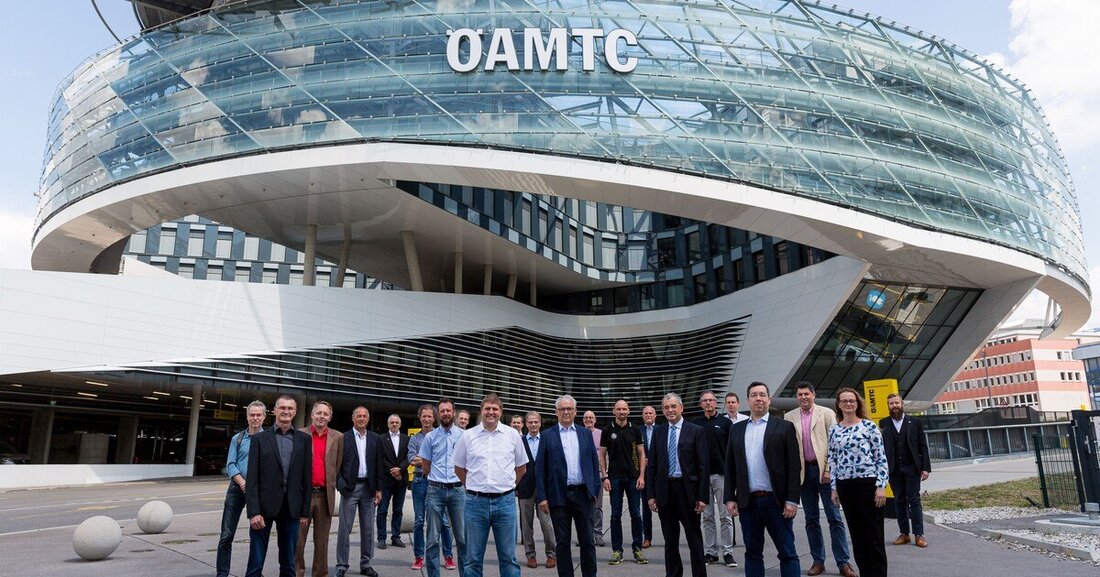ÖAMTC is ready for e-mobility
As part of a presentation of the new OVE guideline R19, the ÖAMTC presented several exciting e-mobility projects and thus appears to be well prepared for the change in drive technologies.

ÖAMTC is ready for e-mobility
Richard Valenta, technical advisor of the Austrian Association for Electrical Engineering (OVE) and ÖAMTC coordinator Andrej Posenc presented the just published OVE guideline R19 to specialist journalists and representatives of the automotive industry. A central theme of the revised set of rules, which defines safe work on HV vehicles from development through production and repair to disposal, is the new classification of training levels, which has been expanded from the previous three to five. In addition to the well-known and largely unchanged levels HV 1 to HV 3, level 0 is now added, which includes, among other things, activities such as vehicle cleaning, refilling operating resources and operating the electric vehicle. In addition, the HV A level has now been introduced, which is primarily intended for towing companies and transporters. It covers topics such as recovery, loading, transport and handover of vehicles with HV systems, with the main focus being the assessment of the danger posed by a damaged HV vehicle.
Electric cars also have breakdowns
In his presentation, HSE manager Christoph Karall discussed how the ÖAMTC uses evaluation, workplace design and health protection documentation to ensure that its employees can work on damaged high-voltage vehicles as safely as possible. The breakdown assistants are equipped with special protective suits, gloves, safety glasses and voltage testers that protect against contact with life-threatening voltages. Afterwards, ÖAMTC technician Thomas Hofbauer presented the system he had designed and developed for continuous temperature monitoring of an HV battery. The temperature measurement is carried out from loading by the towing service, during transport and during possible interim storage until delivery to the destination. Sensors measure the temperature at different points on the battery. If this exceeds a critical value, the driver is automatically informed via a cell phone call so that he can get to safety in good time before a fire occurs.
Plug and play
The topic of charging infrastructure, which is so crucial for the breakthrough of electromobility, is no longer a foreign word for the traditional automobile club, on the contrary. ÖAMTC instructor Christian Klejna presented the cooperation between the yellow angels and the Graz startup “Easelink”, which has developed an induction-based wireless charging platform that is generating great interest from numerous car manufacturers. And product manager Richard Pieger presented the ÖAMTC as a young charging network operator that currently operates around 80 charging points at 32 locations. There is also an ÖAMTC charging card and app with which the electric vehicle can be refueled at over 3,000 charging points throughout Austria.

 Suche
Suche
 Mein Konto
Mein Konto